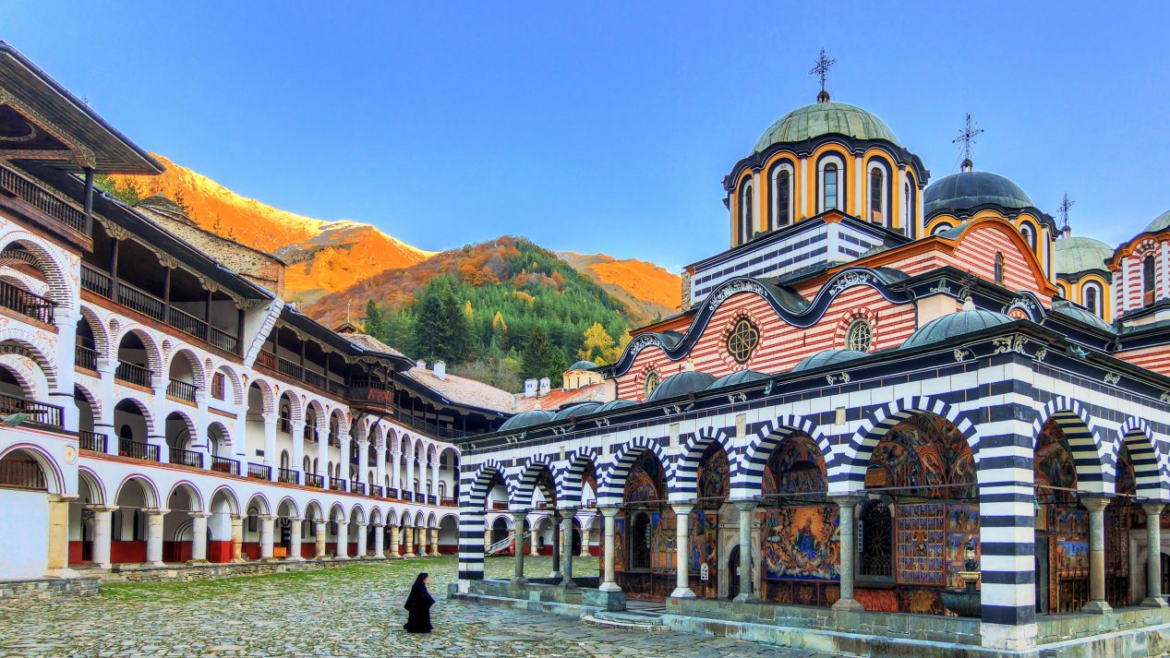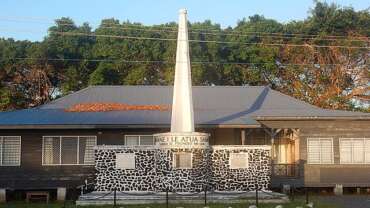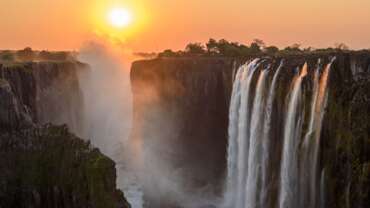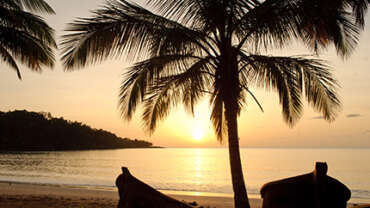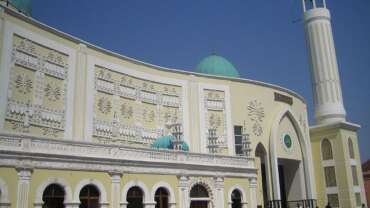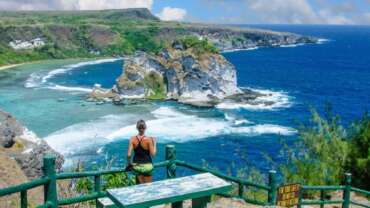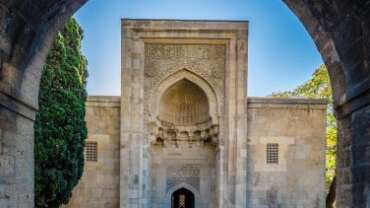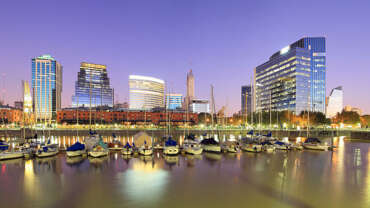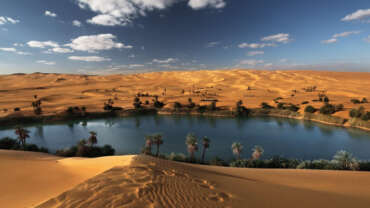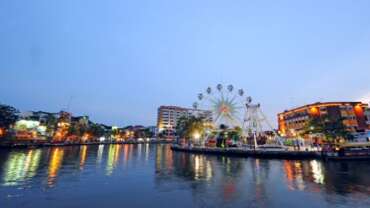Bulgaria - A Discovery to Share
Bulgaria is a Balkan nation with diverse terrain encompassing Black Sea coastline, a mountainous interior and rivers, including the Danube. A cultural melting pot with Greek, Slavic, Ottoman, and Persian influences, it has a rich heritage of traditional dance, music, costumes, and crafts. At the foot of domed Vitosha mountain is its capital city, Sofia, dating to the 5th century B.C.
Bulgaria is situated closer to the Equator than the pole. It falls within the southern part of the temperate climate zone with subtropical influence. Its location on the transition line between two climate zones influences the climate, soils, vegetation and animal species. All of them are characterized by great diversity. The country’s geographic position also determines the relatively wide angle of sunlight that falls on the country, making the country predominantly sunny. The official time in Bulgaria is Eastern European Time, which is two hours ahead of Greenwich Time.
The Black and the Aegean Sea also influence the country’s climate. The influence of the Mediterranean is extensive for the climate in the southern parts of the country, while the Black Sea influences the climate over an area extending some 40 km inland, supporting diverse flora and fauna. The Danube River is important for the country, both with regard to water resources and for species diversity. Bulgaria’s favorable geographic location creates excellent preconditions for the development of tourism.
History of Bulgaria
The territory of Bulgaria has been inhabited since antiquity, as the country’s many ancient settlements and burial mounds attest. Present-day Bulgaria was a cradle of some of the earliest civilizations in Europe – the oldest gold ornament ever discovered, unearthed in the Chalcholite necropolis near Varna, is evidence of that. From the age of Ancient Thrace we have inherited valuable cultural monuments, including tombs (such as the Kazanlak tomb, the Aleksandrovska tomb, and the Sveshtarska tomb); treasures (the Panagyursko, Rogozensko, and Valchitransko teasures, among others); and sanctuaries and temples (at Perperikon, Starosel, Kozi Gramadi, Begliktash, and elsewhere).
The cultural interaction between the Thracians and the Hellenistic civilization were particularly dynamic. Many cities and towns heavily influenced by Greek culture were established between 6th-2nd century BC in Thrace, Misia and along the shores of the Black Sea. In the middle of the 1st century AD, all Bulgarian lands became a part of the Roman Empire. Many architectural and archaeological monuments have been preserved from this period, such as the Ancient Theater and the Roman Stadium in Plovdiv, and remains of the Roman cities Ulpia Escus, Nove, Nikopolis ad Istrum, Nikopolis ad Nestum, Augusta Trayana, and Abritus.
After the dissolution of the Roman Empire, the present Bulgarian lands came under the control of the East Roman Empire, later called Byzantium by historians. In the second half of the 7th century, the proto-Bulgarians settled in what is now Northeast Bulgaria. They united with the Slavs to form the Bulgarian state, recognized by Byzantium in 681. The head of the state was the leader of proto-Bulgarians Han Asparuh, and the city of Pliska was declared the state’s capital.
During the reign Han Krum (803-814), to the west Bulgaria bordered on the empire of Karl the Great, and to the east the Bulgarian armies reached the gates of the Byzantium capital, Constantinople. In 864, during the reign of Prince Boris I (852-889), Bulgarians adopted Christianity as its official religion, which makes Bulgaria one of the oldest Christian states in Europe.
At the end of the 9th century, the brothers Cyril and Methodius created and disseminated the Slavonic alphabet. Ohrid and Veliki Preslav became centers of the Bulgarian and Slavonic culture. From Bulgaria, the Slavonic alphabet spread to other Slavonic states as well. To the present day, Russia, Serbia, Ukraine, Macedonia and Belarus still use the Cyrillic alphabet, with rules of orthography established by the students of Cyril and Methodius and their followers in the Bulgarian capital Preslav. The reign of Tsar Simeon the First (893 – 927) is famous as the Golden Age of Bulgarian Culture, and the borders of the country at that time reached to the Black Sea, the Aegean Sea and the Adriatic Sea.
In 1018, after protracted warfare, Bulgaria was conquered by Byzantium. In 1186, the uprising led by the boyar brothers Asen and Peter, freed Bulgaria from Byzantine rule, establishing the Second Bulgarian Kingdom, with Tarnovo as its capital.
The former might of Bulgaria was restored during the rule of their youngest brother Kaloyan (who ruled from 1197-1207), and during the reign of Tsar Ivan Asen the Second (1218-1241), the Second Bulgarian Kingdom reached its zenith, achieving political hegemony in Southeast Europe. It expanded its borders to the Black Sea, the Aegean Sea and the Adriatic Sea, and greatly developed its economy and culture. Some of the most important monuments preserved from that time are the wall paintings in the Boyana church, the churches in Veliko Tarnovo, the Zemenski Monastery, the Ivanovski Rock Churches, the miniatures that illuminate the London Gospel, and the Manasiy Chronicle.
At the end of the 14th century, the country was conquered by the Ottoman Empire. In the first years of Ottoman rule there were scattered attempts to liberate the country. Later the Hayduk movement created the preconditions for an organized national liberation movement.
The Bulgarian Revival began at the beginning of the 18th century, when the Bulgarian church, educational institutions, and culture were re-established. The beginning of the organized national liberation movement to throw off the Ottoman yoke is marked by the activities of Georgi Rakovski (1821-1867), and key figures in the liberation movement are Vasil Levski (1837-1873), Lyuben Karavelov (1834-1879), Hristo Botev (1848-1876), among others.
In April 1876, the April Uprising took place. This was the largest and the best organized attempt to liberate Bulgaria from Ottoman domination. The uprising was brutally suppressed, but it placed the struggle for Bulgarian sovereignty at the center of international political discussions.
In 1878, with the Russian defeat of Turkey, the Bulgarian state was restored. The Berlin Congress (1878) divided the former Bulgarian territories into three parts – the Principality of Bulgaria, ruled by a prince, Eastern Rumelia, with a Christian governor appointed by the sultan, with Thrace and Macedonia remaining under Ottoman control. Alexander Battenberg was selected as the first prince of the Bulgarian Principality.
Bulgaria’s first constitution was adopted in 1879, and was one of the most democratic constitutions of its time. In 1885, the Principality of Bulgaria and Eastern Rumelia united. In 1908, the Bulgarian Prince Ferdinand Sachsen-Coburg-und-Gotha proclaimed Bulgaria’s independence from Turkey, and he was then declared Tsar of the Third Bulgarian Kingdom.
Bulgaria was victorious in the Balkan War of 1912, when together with Serbia and Greece the country gained the independence of Thrace and Macedonia. However, discord among the former allies led to the outbreak of the First Balkan War (1913), in which Bulgaria was defeated. As a result, territories predominantly inhabited by Bulgarians were cut off from the state. The participation of Bulgaria in the First World War on the side of the so called Allied Powers ended in national catastrophe. The Neuilly Peace Treaty (1919) imposed strict sanctions on Bulgaria, and the country lost much of its territory. In the Beginning of the 1940s, Bulgaria’s foreign policy reflected the interests of Germany and the Axis powers. In 1941, Bulgaria entered the war on the side of the Axis, but the Bulgarian army did not participate in the battles on the Eastern Front. During this time, Tsar Boris the Third, representing the general consensus, refused to deport some 50,000 Bulgarian Jews. Of all European countries, only Denmark and Bulgaria managed to save their Jewish populations from the Nazi gas chambers. In the autumn of 1944, Bulgaria joined the Allied Forces and actively participated in expelling the German forces from Southern and Central Europe.
After the Second World War, Bulgaria came under the political and economic influence of the USSR. In 1946 the country was declared a republic and the Bulgarian Communist Party came to power. All political parties except for the so-called Fatherland Front (Otechestven Front) were forbidden, the economy and the banks were nationalized, and the agricultural land was organized as collectives.
The democratic changes in Bulgaria started at the end of 1989, when multi-party elections were held and a new constitution was adopted. At this time Bulgaria began its transition to democratic development and a market economy. Its foreign policy was redirected towards rapprochement with European institutions. Since 1991, Bulgaria has been a member of the Council of Europe, and in 2004 Bulgaria became a member of NATO. In 1995, it filed an application to join the European Union, with negotiations commencing in 1999. On 25 April 2005, the Accession Treaty granting the Republic of Bulgaria the right to join the European Union was signed in Luxemburg. On 1 January 2007, after fulfilling all membership criteria, Bulgaria became of full-fl in Luxemburg was signed edged member of the European Union.
Lifestyle and Culture of Bulgaria
Lifestyles and cultures in what is now Bulgaria have developed over thousands of years. The country is located at the crossroad between Europe and Asia, and the lands of Bulgaria have been populated since antiquity. The Slavs and proto-Bulgarians were greatly influenced by the cultures of the Thracians, Illyrians and Greeks, and all peoples who resided on these lands – Thracians, Romans, Slavs, and Bulgarians – have contributed to the world’s cultural heritage. It is no accident that the earliest European civilization grew up here. Some of the most famous treasures in the world were discovered at the Varna necropolis, including the worlds oldest golden ornaments; There are Thracian tombs and sanctuaries in Kazanlak, Sveshtari, Starosel, Aleksandrovo, Perperikon, and Tatul.
A large number of other golden artifacts have been found, in the Panagyurishte, Valchitran, Rogozen, and elsewhere. The remains of the Thracian, Hellenistic and Roman culture are many and varied. In the dozens of Thracians tombs that have been discovered, there are unique remains attesting to the high material and spiritual culture of antiquity. Entire city complexes had been found – Augusta Trayana, Trimontium, Nikopolis ad Istrum, Pautalia, Akre, Mesemvria, Apolonia, Serdika and many others. The traditions, festivals, customs, and rituals preserved by Bulgarians through the ages are evidence of the country’s profound spirituality and its dynamic lifestyle and culture.
Bulgarian customs are rooted in antiquity and are closely tied to the country’s history and particular expression of Eastern Orthodox Christianity. Dancing on live coals is an ancient Bulgarian ritual still practiced in a few villages in the Balkan Mountains. The ritual in its authentic form is performed on the name day of Saints Konstantin and Helena – 21 May or (3 June according to the old calendar. Fire dancers prepare for their dance by spending hours locked in a chapel, venerating the icons of these two saints while listening to the beating of drums and the music of gaidas (Bulgarian bagpipes), which is a special melody associated with fire dancing, after which they often fall into trance. In the evening they perform their special dance on live coals. During their dance they always hold aloft in both hands an icon of Saint Konstantin and Saint Helena. Amazingly, they never get hurt or burn their feet.
“Mummers” is another local tradition that also found in other societies in the world. The Mummer games are special customs and rituals conducted most often on New Year’s Eve and at Shrovetide. They are only performed by men, who wear special masks and costumes that have been made for the occasion by each of the participants. The mummers’ ritual dances are said to chase away bad spirits and demons at the beginning of every year, so as to greet the new year cleansed and charged with positive energy.
“Laduvane” is another interesting ritual thatis performed on the New Year’s Eve, George’s Day, Midsummer’s Eve and St. Lazar’s Day. At this ritual young women predict their future in marriage and the men they will marry. They address Lada, the goddess of love and family life, to ask her about their future husbands.
“Lazaruvane” is a ritual related to coming of spring. It is conducted on St. Lazar’s Day, eight days before Easter. The date of the celebration varies, but it is always on the Saturday before the celebration of Palm Sunday. On this day willow branches are picked and used to decorate the doors of houses on the following day. Then the young maidens in the villages pick flowers to shape as garlands on Palm Sunday. On Saturday maidens gather in the home of one of their number and dress in festive clothes decorated with flowers and sprigs. Then they walk through the village from house to house, offering blessings for good health and rich harvests. They are invited in and given small gifts. Probably the most important symbol of Bulgaria is the ritual of making and giving martenitsas for health and happiness at the beginning of March. For Bulgarians this is a symbol of the year’s renewal, again intended to promote health and successful harvests.
Especially well-respected in Bulgaria are traditions related to the circle of life – birth, christening, wedding, and funeral. Saints’ name days are also highly respected in the country, the most famous ones being St. John’s day, St. George’s Day, and St. Dimitar’s Day.
The holidays that are most honored by Bulgarians are undoubtedly Christmas and Easter – when the generations all celebrate together, united by the feeling of belonging to the harmonious Bulgarian family. Also especially highly honored are the first Sunday before Lent, the second Sunday before Lent, Mother’s Day, All Soul’s Day, and Lent.
While traveling around the country, tourists will become acquainted with various rituals and customs, many of which are typical only for specific regions in Bulgaria.
The Rose is the symbol of Bulgaria. Rose picking, one of the oldest and traditional customs of Bulgarians, has become primarily a tourist attraction. Carpets from the time of the Bulgarian Revival are now highly valued works of art. The major centers of carpet weaving are Kotel, Chiprovtsi and Samokov. Along with traditional handicrafts, Bulgaria’s people have also preserved a wide range of traditional popular customs and songs.
There are a number of architectural reserves in the country that preserve the unique Bulgarian architecture from the age of the Revival (18th – 19th centuries) – Koprivshtitsa, Tryavna, Bozhentsi, Zheravna, Bansko, and Melnik, among others. In some of the ethnographic complexes, such as Etara, Zlatograd, and Old Dobrich, tourists can appreciate first-hand Bulgarian customs and handicrafts, since residents continue to make articles according to old techniques passed down from generation to generation.
During the Bulgarian Revival, the monasteries served as centers of artistic and educational activity. There are still many working monasteries in the country – Rila Monastery, Bachkovo Monastery, Troyan Monastery, Zemen Monastery, Glozhene Monastery, Kilifarevo Monastery, Shipchenski Monastery, and others. Our country is also famous for its well-established national traditions of icon painting and wood carving. The best known icons and carvings are from Samokov, Tryavna and Bansko.
The Bulgarian national costume is an intrinsic part of Bulgarian lifestyle and culture. Over the ages, folk costume designs have been influenced by Thracian, Slavonic and ancient Bulgarian motives. The basic article of clothing is a white shirt with long sleeves, worn under vests and coats of various shapes, materials and decorations. There are four types of national female costumes: the single apron, the double apron, the tunic, and the sayana, and there are two types of national male costumes: white-shirt and black-shirt. Each ethnographic area (Dobrich, Pirin, Rhodope, Northern, Thracian and Sofia) has its own typical workday, holiday and wedding costumes.
An important part Bulgarian culture is folk music and national dances, such as the horo. Instruments typically used to perform Bulgarian national music are the fiddle, the mandolin, the kaval (flute), the gaida (bagpipe), the pipe, the dvoyanka (double pipe), the drum and the taranbuka, another percussion instrument. Bulgarian folksongs are handed down orally from one generation to the next. The ensembles “Cosmic Voices”, “The Mystery of Bulgarian Voices” and the folklore ensemble “Pirin” are internationally famous. Bulgarian traditional dances are exceptionally vivid forms of artistic expression. Most often they are performed by a group of people touching palms in a closed or open circle, semicircle, serpentine pattern, or in a straight line. Participants perform similar movements in unison, along with gestures and steps to a specific melody (the horo). Depending on the rhythm and the steps, there are a number of horo types: the standard horo, the rachenitsa, the paydushko horo and the improvised horo.
Bulgaria’s museums preserve valuable collections of domestic, cultural and military articles; statues, burial steles and monuments; masks, mosaics, and small statuettes of ancient gods; and many other precious exhibits.
Bulgarians have developed their culture and enriched it over the millennia, and they preserve it and continue to develop it to the present day. In more recent times, Bulgarians have also had reason to take pride in their literature, arts, music, and architecture. A proof of ongoing involvement is Bulgaria’s rich cultural calendar of national and international festivals for young and old alike, as well as other gatherings, cultural events, and expositions.
Traditional Cuisine of Bulgaria
Bulgarian cuisine is exceptionally diverse and delicious, consisting of various salads, breadstuffs, stews, and other local dishes. Many of the dishes are prepared according to traditional recipes handed down from generation to generation over the centuries.
The most products for which Bulgaria is internationally known are yogurt and white brine (feta) cheese. These are almost always present on Bulgarian tables in one form or another.
One of the most famous and most popular breakfast items in the country is banitsa. It is a made of dough with various fillings, such as cheese, spinach, rice, and meat.
Other popular breakfasts dishes include pancakes, buhtas (fritters), mekitsas (fried dough pieces), and fried bread slices. All of these are particularly delicious when served with jam, marmalade, honey or Bulgarian yogurt.
People in rural areas grow vegetables that are exceptionally tasty, which is why salads occupy a central place in our culinary tradition. The most popular Bulgarian salad is the Shopska Salad, but there are also other salads worth trying – Shepherd’s Salad, Harvest Salad, Snezhanka, Monk’s Salad, Dobrudzha Salad, Roasted Peppers Salad, and many others.
One of the most popular appetizers is Tarator (cold Cucumber Soup). It is prepared with yogurt, cucumbers, dill, crushed walnuts and spices.
Soups and broths are also popular in the countryside – particularly delicious bean soups are served in the region of the village Smilyan, in the Rhodope Mountain. Excellent fish soups are served in the regions of the Black Sea and the Danube River.
Some of the most popular Bulgarian dishes are grilled – meat balls, kebapches, grilled meat pieces, grilled sausages, and others. Various stews and dishes in clay pots are also a regular part of the Bulgaria cuisine (hotchpotch and casseroles). These include Chomlek, Kavarma, and Kapama (in the Bansko region).
Another favorite Bulgarian dish is prepared with stuffed cabbage or vine leaves – the leaves used may be either small or broad. The dish, which is prepared by wrapping the filling in the leaves, is very popular in the Thracian region.
One of the trademarks of the Bulgarian cuisine is Cheverme – an entire lamb roasted on a spit. This dish is typical for the Rhodope region, but it is also served throughout the country.
Potatoes are a main ingredient in many Bulgarian recipes. The most popular potato dishes include Ogreten (au gratin), Patatnik (in the Rhodope region), potato stew, and fried potatoes.
Bulgaria’s cuisine also consists of various cold cuts and other meat delicacies. Flat sausage is the most famous of thewse. It is prepared all over the country, but it has the longest tradition in the city of Gorna Oryahovitsa. Another popular delicacy is the Banski Starets (the “Bansko Old Man”). As the name suggests, it is served in Bansko. In Elena and the region known as the Elena Balkans, a specialty is the Elena Pork Leg, prepared with salted pork.
Such delicacies are usually accompanied with a Bulgarian wine, since Bulgaria is justly famous for its wines. Thanks to the country’s unique climate and soils, a variety of grapes thrive here – Gamza (North Bulgaria), the Wide Melnik Vine (in the region of Melnik and Sandanski), Dimyat (in the regions of Varna, Shumen and Stara Zagora), Mavrud (Plovdiv, Pazardzhik, Asenovgrad), Red Misket (Straldzha and Sungurlare), Ruby (Plovdiv and Septemvri) and Pamid (Pazardzhik, Pamidovo and Plovdiv).
Another very popular Bulgarian spirit is Rakia. It is made of grapes or other fruits – plums (in the region of the town of Troyan, Teteven), apricots (in the region of Tutrakan, Silistra, Dobrich), figs, pears, and others. A rose rakia is distilled in the Valley of Roses (in the region of Karlovo and Kazanlak), since this is the home of Bulgaria’s oil-yielding roses.
This brief introduction only touches on the diverse Bulgarian dishes and drinks. To fully know the culinary magic of the country, it is necessary to visit all of the regions where the traditional recipes are proudly maintained and culinary delights are constantly on offer.
Camping Tourism in Bulgaria
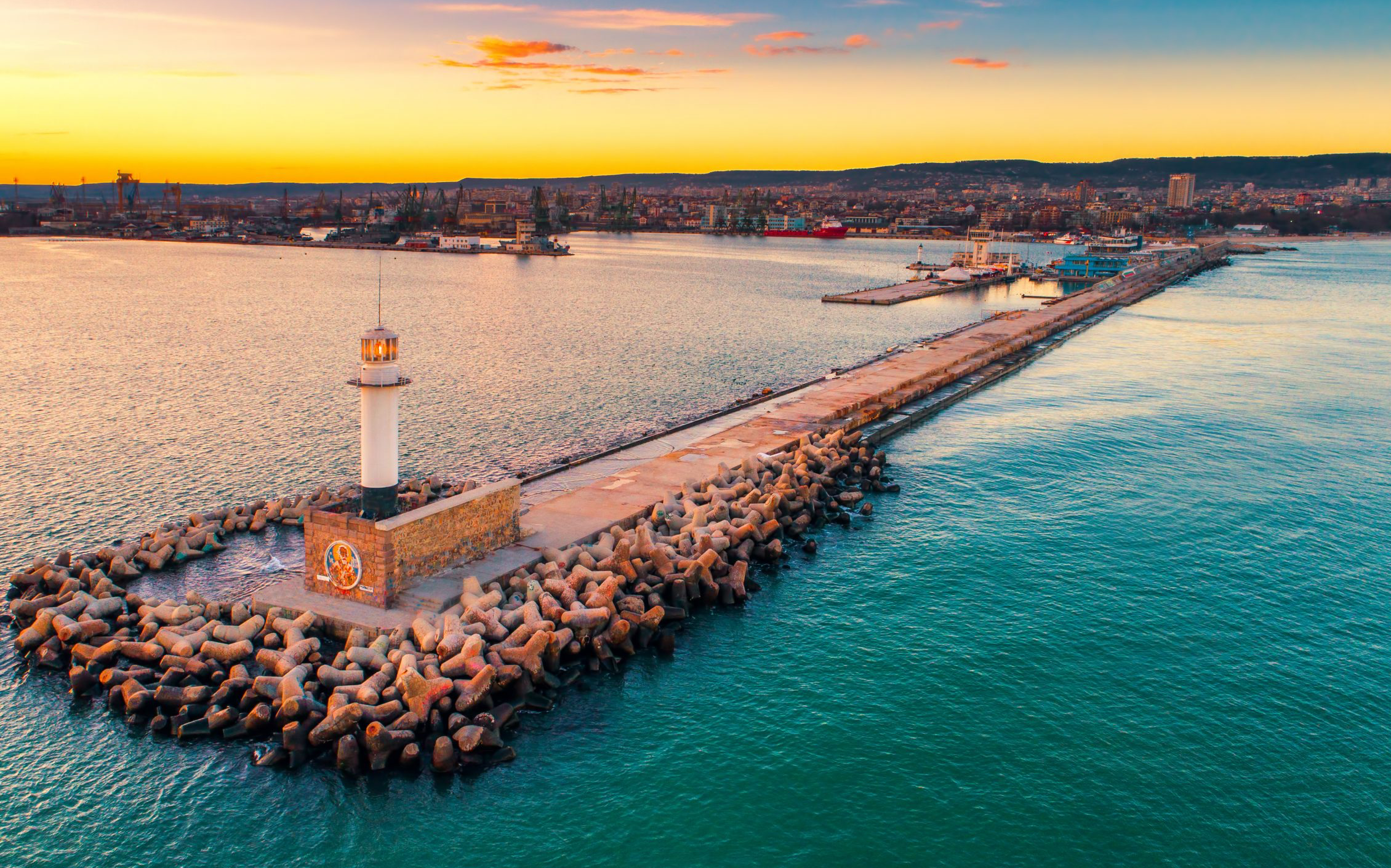
Bulgaria offers well equipped campsites that attract tourists from around the country and abroad who prefer alternative recreation that puts them in close touch with nature. The camp sites are mainly located along the Black Sea coast, near some of the Bulgaria’s most beautiful beaches. These sites include those at Arapya – a favorite place to spend seaside nights under the stars – Gradina, Zlatna Ribka, Yug, Delfin, Silistar, Aheloyska Bitka, Smokinya, Koral, Zora, Oazis, Kavatsi, and Kiten.
On the northern Black Sea coast there are also pleasant spots where campers can pitch a tent or park a caravan in a shady forest near the beach. The most popular camping sites in this region are located near the resorts of Albena and Golden Sands (the Laguna campsite), in the region of the Kamchia River, near the villages of Shkorpilovtsi and Shabla (the Dobrudzha campsite), Irakli, and Durankulak (the Kosmos campsite).
The country’s interior also offers good camping, some of which are now managed by foreign entrepreneurs. In northern Bulgaria, such sites include the Madonna campsite, Tangra, Srebarna, Veliko Tarnovo, Kamenovo, Chumerna, Strinava, among others, and in southern Bulgaria there are Predel, Gorski Kat, Batak, Atolovo, Borovets, Zodiak, Lyubovishte, SBA, Bor, Verila, and Kransko.
The country’s natural parks also provide camping facilities, so that visitors can hike the trails of their choice and pitch their tents at a different place every day. This way of camping requires good preparation and equipment. Campers should always hike and camp responsibly, so as to preserve Bulgaria’s natural heritage.



